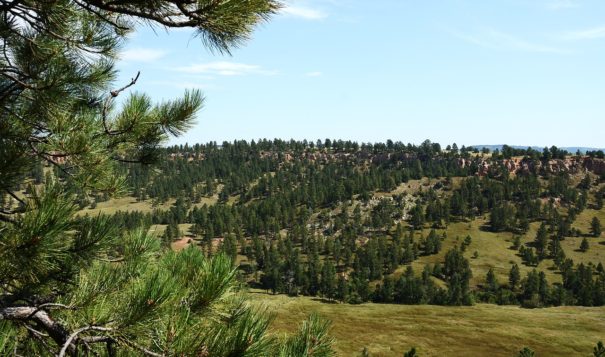News Based on facts, either observed and verified directly by the reporter, or reported and verified from knowledgeable sources.
‘Historic’ meeting renews push for Black Hills

Stewart Huntington
Special to Indian Country Today
RAPID CITY, South Dakota – Tribal leaders from 12 Great Plains Native Nations conferred Friday in the Black Hills with Interior Secretary Deb Haaland in a meeting tribal leaders called “historic.”
Several leaders brought up the long-standing issue over control of the Black Hills, the sacred Paha Sapa of the Oceti Sakowin tribes.
“Some of the chairmen asked for the return of the Black Hills,” Cheyenne River Chairman Harold Frazier told Indian Country Today after the meeting. “I believe that they should be returned back to the Native people.”
Oglala Lakota President Kevin Killer agreed.
“We want to make sure that it gets up to the president and I think the secretary is committed to carrying that message up there,” Killer said.
Tribal leaders had a chance to state their individual concerns during a two-hour, closed meeting held at the Interior Department’s Office of the Special Trustee for American Indians in Rapid City.
“I think it’s a strong sign from this administration that they want to recommit, re-establish and create better relationships with the region,” Killer said. “We need our issues heard and they’re willing to elevate those issues.”
Standing Rock Sioux Tribal Chairwoman Janet Alkire said the meeting may have marked a turning point.
“To have a cabinet secretary come to the Black Hills is super important,” Alkire said. “It’s historic.”
Haaland, Laguna Pueblo, made no public statements before or after the meeting, but Assistant Secretary of the Interior for Indian Affairs Bryan Newland, Bay Mills Indian Community, said the meeting was productive.
“We’re here to listen directly to tribal leaders,” he said afterward. “It was a good opportunity to hear their concerns first hand.”
Frazier said he wanted to make sure the people of the Native nations are not overlooked.
“My main issue is that we can’t forget the day-to-day lives of our people on the reservations,” he said. “How are we going to address the poverty? How are we going to address the poor health care and the bad infrastructure?”
Haaland, a former Congresswoman from New Mexico, is the first Indigenous person to hold a cabinet post. That point was not lost on tribal leaders Friday.
“For us as Native people to have Secretary Deb Haaland be there and be that voice and be the role model that we need makes me very proud,” said Alkire, who made history in October when she became the first woman in 50 years to be elected leader of the Standing Rock tribe.
“And me being a Lakota winyan, you know how proud I am to see another historic moment, to see a woman sitting at the cabinet level,” Alkire said. “And her being a Native woman is very, very exciting.”
The meeting was organized by the Great Plains Tribal Chairman’s Association. A briefing paper prepared by the Oglala Sioux Tribe called the meeting unprecedented.
“Our people will remember this day – the day the first Native Secretary of the Interior met with the Native Nations of the Great Plains on a government to government basis in our Native homeland at the food of the sacred Black Hills,” the document began.
“This historic summit signals the potential for a new era in our U.S.-Native relations, an era in which the U.S. will honor its treaty promises and promote the sovereignty, self government and self determination of our Nations,” it continued.
Native leaders expressed hopes that a follow-up meeting would be scheduled in Washington in January.
